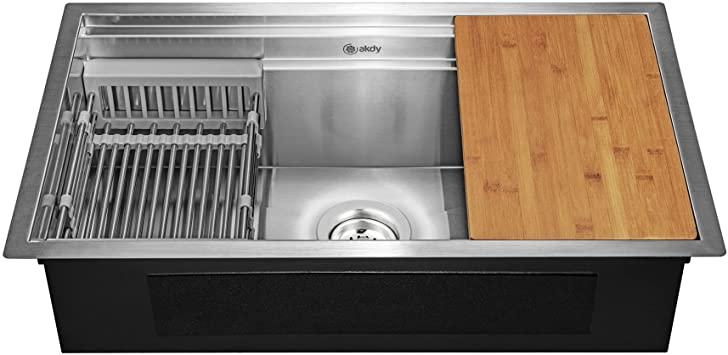THE WASHINGTON POST – If there’s one place where I have spent more waking hours than at my desk the past 13 months, it’s my kitchen sink. Washing hands, washing dishes, rinse, repeat. Multiple times I have suddenly become so distressed by the appearance of this fixture that I will drop whatever I’m doing, often at inconvenient moments, like right before bed, to clean it until it sparkles.
I know I’m not alone. “I think we do take it for granted,” said marketing manager for kitchen sinks at Kohler Lisa Hurley. She said that on average, we use our kitchen sinks 10 to 12 times a day, so we can’t afford to ignore it. Thankfully, “taking care of your kitchen sink is really, really easy”, according to Hurley.
And take care of it you should. “A sink is a hard thing to rip out and replace,” said Moen’s sinks team product manager Matthew Baranuk. “You might have the same sink for… 20-plus years. That thing’s not going anywhere.” He guesses nine out of 10 people don’t pay as much attention to their sinks as they should.
Here are some tips to help you do due diligence to this kitchen workhorse we can’t live without.
Take routine, small steps. Incorporating a little TLC into your everyday routine can go a long way toward sink maintenance. Hurley encourages home cooks to rinse out all food debris to discourage bacterial growth and prevent it from drying on, at which point it’s much harder to remove. An extra minute to wipe out the sink with a soft cloth is also helpful, and so is drying around the faucet or other fixtures, such as a sprayer wand, to ward off mineral or grime buildup.

Get in the habit of a regular cleaning. Even if you engage in the steps above, you’re still going to want to make a habit of a more thorough cleaning every so often. Baranuk recommends waiting no more than 10 days to give your sink some more intense attention. We’re living in a time of heightened attention to hygiene, but Hurley and Baranuk both emphasise one big tip: Please, no harsh cleaners or tools on your sink. “I would say that less is more,” said Hurley, who notes that a simple approach of dish soap and water is typically sufficient.
Baranuk has seen online videos promoting steel wool. “It’s almost like a horror film to me,” he said, because something like that can remove the finish. What about more intense products such as Soft Scrub and Comet? “Those are all big no-nos,” Hurley said. Even straight-up vinegar can prove too harsh, she said. Baranuk likes Bon Ami as a gentle yet effective option, although he often goes natural with a halved lemon coated in salt (bonus: the spent lemon can be tossed down the disposal to clean and freshen that). Bar Keepers Friend is in my arsenal, too, when my stainless steel sink needs a good shining. Some manufacturers, including Kohler, offer cleaners designed for their specific sinks. Regardless of what you use, Hurley said, it’s a good idea to test it on a small spot first and not leave it on the sink for an extended period of time.
Sinks are also notorious for having tricky spots to clean, depending on the style, such as around the faucet and the seams where they meet the counter. “I have like five toothbrushes underneath my sink that I use” for that purpose, Baranuk said. They’re gentle and can get into places where a large cloth or sponge might not, including in the holes of a faucet or sprayer. Use in conjunction with soap and water as needed.
Understand your sink’s particular needs. I have a pile of manuals for various appliances and gadgets, but the sink? Not so much. Most of us are living with a sink installed by someone else, with the manual lost to time. If you’re ready to take a more proactive approach to sink maintenance, do yourself a favour and try to track down the instructions online.
Even if you can’t find them, know that your sink may have slightly different requirements depending on what material it is. The majority of sinks are stainless steel, which can get scratched. Hurley said you should think of this as part of its character.
When it comes time to washing dishes, Baranuk admits to being especially careful, and prefers to wash at least the inside of large pots and pans on a towel set on the counter. His concern is that intense scrubbing of bulky, heavy items (Dutch ovens, cast-iron skillet), especially as you lift one side for leverage, can cause dents or scratches should they slip.
To protect the bottom of the sink and your dishes, Hurley recommends a bottom basin rack. They’re preferable to a rubber mat, under which you’re more likely to get bacterial growth. The bottom basin rack allows for air circulation and can double as a dish drying spot if you don’t have one on your counter or it’s full.
